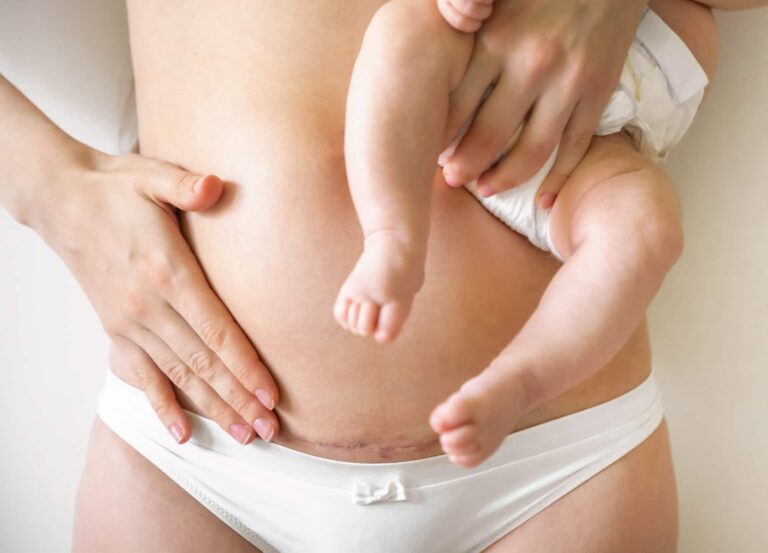This article has been medically reviewed for accuracy by Marietta, GA plastic surgeon Dr. Stanley Okoro on August 13, 2020.
Noninvasive body contouring might be all the rage, but liposuction still reigns, in terms of popularity and overall bang for your buck. First, there’s the obvious: that fat gets suctioned out via a surgical incision in the skin—but there’s more to it. For starters, you might not necessarily need general anesthesia for liposuction, depending on where on the body you get it. It’s also one of the few procedures in which you’ll see results after just one treatment. Not surprisingly, there are just as many misconceptions about it, so we asked seven plastic surgeons to clear up the rumors they hear most often.
Misconception: Liposuction delivers immediate results
Reality: It’s a little more nuanced than that. While your surgeon can see the results during surgery—for instance, how much fat is being sucked out and when to stop in order to ensure your body looks proportional—liposuction is usually followed by post-surgical swelling, which delays the true results of the procedure. According to plastic surgeons, “The treated area can remain swollen for up to two to six weeks.” For that reason, you may have to wear a compression garment for a few weeks, to minimize swelling and balance your fluids. Ultimately, “your final results from liposuction are best seen 12 weeks after your procedure,” says Dr. Parcells.
Misconception: If you have liposuction in one area, the fat will travel elsewhere
Reality: Your fat cells won’t “spawn” or just wander around the body once you have liposuction. As we age, we gain more fat. The area without liposuction will appear bigger and the areas with prior liposuction will always look better. This is the main reason it appears that the fat traveled elsewhere. So long as you maintain your weight, “the fat won’t go somewhere else, because the number of fat cells in our system is set,” explains New York City board-certified plastic surgeon Dr. Michelle Copeland. Your fat cells can fluctuate in size—which depends on your diet and exercise habits—but there’s only a finite number of them. “Because of genetics, some areas simply house more fat cells,” Dr. Copeland explains. “When we suction some of these cells from the problem area, we permanently remove the amount of fat that can build up there.”
However, Dr. Allen Gabriel, a board-certified plastic surgeon in Vancouver, Washington, says that the misconception is partially true. In some cases, “the fat cells that are left behind in other areas get larger since the fat has to be deposited somewhere. This is why, after belly or back lipo, some people will complain that their arms or legs are larger.” He prefers to inject the fat taken out during liposuction “somewhere useful after, such as the butt or breasts, so it doesn’t affect another unwanted area.”
Misconception: You’ll have loose skin in the area where the fat was removed
Reality: If the skin was firm and smooth before liposuction, like an inflated balloon, then removing fat volume would lead to sagging skin, similar to a deflated balloon, right? Not exactly. “The skin has a network of proteins composed of collagen and elastin, which allow contraction and tightening of the skin,” explains Dr. Chris Funderburk, a board-eligible plastic surgeon in New York City. “This is sufficient to tighten the skin of many patients, especially younger people.” On top of that, there are now a number of skin tightening devices on the market. “These devices work by applying energy to the skin’s underlying collagen and elastin network, thereby causing contraction of the skin,” says Dr. Funderburk, who likes Renuvion because, he explains, it’s safe, isn’t time-consuming, and can be used without general anesthesia.
Misconception: Liposuction will help you lose weight
Reality: It’s not a weight-loss procedure. “Liposuction is for patients who are looking for body contouring,” says Los Angeles board-certified plastic surgeon Dr. Andrew Cohen. He doesn’t recommend doing liposuction on those who are obese or overweight, because removing too much fatty tissue could lead to complications. “The best candidates for the surgery are patients with problem areas,” he explains. “Liposuction, diet, and exercise is the mantra—you have to do all three.” You may lose a few pounds in the process, but the change on the scale will generally be minimal.
Related: High-Tech to High-Def—How Popular Tools and Techniques Are Reshaping Liposuction
Misconception: Liposuction will take care of cellulite
Reality: Cellulite and fat are not as closely related as you might think. Cellulite is actually a complex problem stemming from dermal skin attachments—not fat. “Excess fat doesn’t really contribute to cellulite, so removing fat won’t make it better,” explains Dr. Carmen Kavali, a board-certified plastic surgeon in Atlanta. “Even the skinniest of people can have cellulite.” However, excess fat in an area might make cellulite appear worse.
Misconception: Liposuction is no big deal
Reality: While few things offer more payoff than liposuction in terms of results, that doesn’t mean it’s a simple procedure. “The reality is that liposuction is indeed a surgical procedure and not something to be taken lightly,” says Chicago double board-certified plastic surgeon Dr. Niki Christopoulos. It comes with the same risks as any surgical procedure, which is why shortcuts are not a good idea—and that goes for choosing your provider too. The right selection can make all the difference. “When performed correctly by a board-certified plastic surgeon with appropriate training and experience, it is a very safe and rewarding procedure,” she says.











